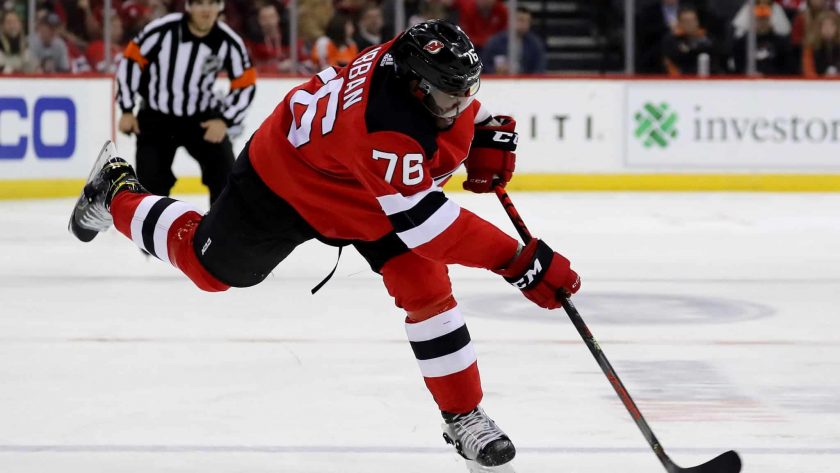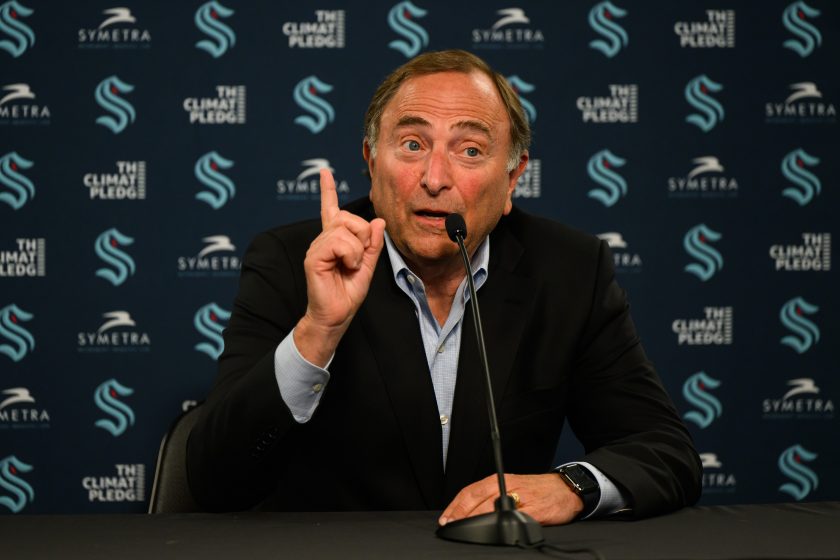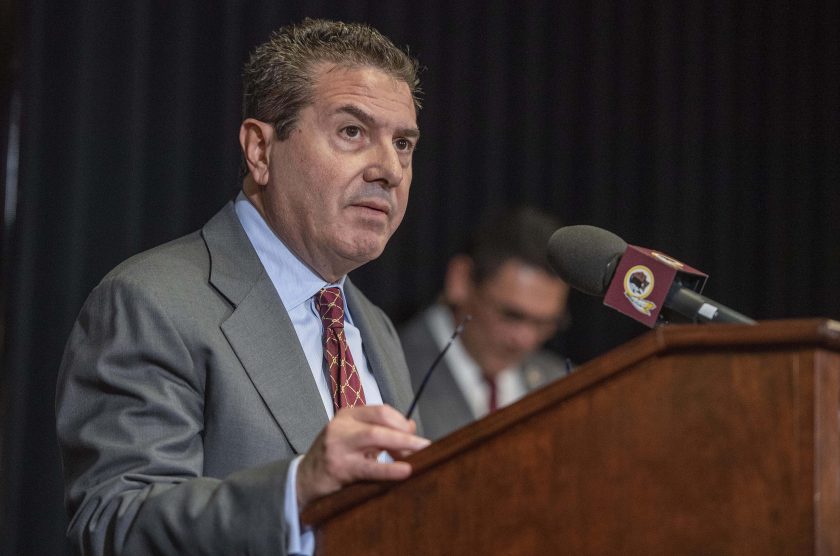The New Jersey Devils’ 2019-20 season by the basic numbers

Here’s a glance at how the New Jersey Devils stacked up against the rest of the NHL in some basic statistical categories this past season.
The NHL may jump straight into postseason play or cancel the remainder of the 2019-20 campaign due to the COVID-19 outbreak. Either way, a mediocre season of New Jersey Devils hockey is potentially over.
The Devils are currently 28-29-12 (68 points), which has them in last place in the Metropolitan Division. While disappointing, this was expected from a New Jersey team who’s currently still in the early phases of a rebuilding project with one of hockey’s youngest rosters.
To best evaluate how the Devils young squad is truly comparing with the rest of the NHL, looking at some basic stats is more helpful than a glance at the standings.
Let’s assess how New Jersey is stacking up in those regards.
Goals per game: 2.68 (tied for 24th)
It’s pretty basic, but at the end of each game, the most important stat in all of hockey is how many goals a team scores. Needless to say, the Devils’ season has included a lack of pucks going in the net.
New Jersey is tied for 24th in the NHL in goals scored per game with an average of 2.68. If the season ended right now, only two teams that have scored less than them (Dallas Stars and Columbus Blue Jackets) would qualify for the postseason.
Kyle Palmieri is leading the Devils with 25 goals on the year. The next-closest is well below 20 — Jesper Bratt has scored 16. With only one reliable scorer, New Jersey’s current record doesn’t come as a surprise.
Goals allowed per game: 3.25 (tied for 28th)
Only the 17-49-5 Detroit Red Wings (3.73) and 25-34-12 Ottawa Senators (3.35) have allowed more goals per game than the 3.25 that have made their way past the Devils goaltenders.
While starter MacKenzie Blackwood has allowed just 2.77 goals per game when in net, reserves Cory Schneider and Louis Domingue have struggled.
Schneider is allowing an average of 3.53 goals, recording a save percentage of 88.7%, and has won just three of his 11 starts. Domingue made 14 starts and 16 appearances, in which he went just 3-8-2 and allowed 3.79 goals per game before New Jersey shipped him off to Vancouver on Feb. 24.
Not only are the Devils experiencing troubles in the net, but some of their key defensemen are undergoing down years. Will Butcher had season-ending surgery and P.K. Subban is having a rough inaugural campaign in red.
To put it simply, poor defense and goaltending are making it hard for the Devils to keep pucks out of the net.
Power play percentage: 17.9% (21st)
Nearly every NHL team capitalizes at a high rate when given a man advantage, but for the 2019-20 Devils, scoring on power plays hasn’t exactly been a strength.
The Devils have scored on just 17.9% of their power play opportunities, which ranks 21st in the league.
To put this number in perspective, the Boston Bruins, the only NHL team at 100 points, rank second in power-play conversions — 25.2%. Only the Edmonton Oilers, who also hold a postseason spot, are better at 29.5%.
Thus, the Devils must put the right pieces together this offseason in order to take full advantage of opponents’ mistakes.
Penalty kill percentage: 82.3% (7th)
The one positive stat that the Devils rank among the NHL’s best in is penalty kill percentage. New Jersey is seventh-best in hockey in those regards, killing 82.3% of opponents’ power plays.
New Jersey is killing penalties just 3.4% less than the San Jose Sharks, who have the league’s top penalty kill percentage with 85.7%. The Devils are also killing penalties 1.9% less frequently than the Bruins, who are posting the Eastern Conference’s best mark at 84.2%.
By ranking seventh, the Devils are on pace to be among the top 10 in penalty kill percentage for a third straight season.
Shots per game: 30.7 (tied for 21st)
Even casual hockey fans know the key to scoring is putting plenty of shots on net. This season, the Devils aren’t doing such a great job in those regards.
New Jersey is averaging 30.7 shots attempted per game, which is tied for 21st in the league. This mark is well behind the league-leading Vegas Golden Knights, who are averaging 34.5 shots attempted, but still well over the Red Wings, who are last in that category with 27.1.
While not overly impressive, 30.7 is slightly higher than the 30.3 shots per game the Devils averaged during the 2018-19 season.
Shots against per game: 32.7 (26th)
Not only are the Devils struggling to put pucks on net, they additionally haven’t been the best in keeping the opposition from taking shots at Blackwood, Domingue, and Schneider.
The Devils have allowed 32.7 shots per game, which is tied for sixth-most across the league. This mark is far from the NHL’s elite. The Philadelphia Flyers are leading the league in preventing shots at 28.7 per game.
This stat is also concerning considering it’s a step back from last season. New Jersey tied for 16th in this category during the 2018-19 campaign with 31.6 allowed per game.
With more than one additional average shot allowed despite the acquisition of Subban, this will be a problem to address further this offseason.






